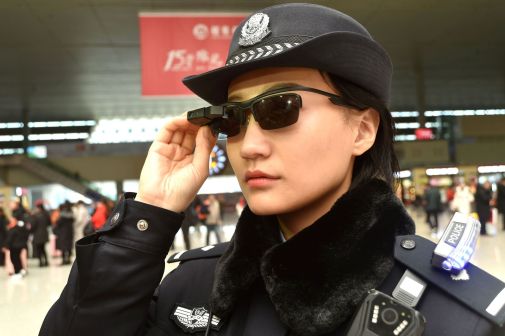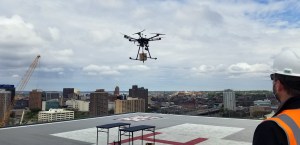First responders say they want better tech interoperability

A majority of police officers and other emergency responders feel their communications technologies are capable of supporting their work, but many still say there’s a need for greater interoperability between devices, agencies and networks, according to a survey published Thursday by Verizon.
The survey, which questioned more than 3,000 cops, firefighters and emergency medical personnel, found that 70% are comfortable with existing technologies, including smartphones, mobile radios, laptops and push-to-talk devices. But 80% said that interoperability — the ability to communicate with other agencies across differing technologies — is of “critical” or “somewhat” concern.
During a panel discussion in Washington on Thursday, former local and federal law enforcement and emergency officials said that the ballooning amount of data being created by new technologies makes interoperability all the more important in their lines of work.
“We need to move data faster,” Karen Tandy, who led the Drug Enforcement Agency under former President George W. Bush, said during the event. “Public safety doesn’t have the same technology the public has.”
Interoperability has long been a concern for public-safety officials, especially as newer technologies, like next-generation 911, come online. (Verizon’s rival phone carrier, AT&T, built FirstNet, a broadband network for public-safety agencies that’s designed to be interoperable.)
Concerns about cross-device and cross-network communications are likely to grow as law enforcement and public safety embrace more tech, the survey found. Already, roughly three-quarters of respondents said their personal smartphones are their most essential communications tools, followed closely by mobile radios and laptops.
The survey also found that mobile phones and tablets are to become more relied-upon, as are more emerging technologies, such as land and aerial drones, internet-connected vehicles, body-worn cameras and internet-connected surveillance devices.
The tech-adoption trend in public safety is further fueled by the rollout of 5G technology, though the survey found that first responders’ understanding of the new wireless standard is still developing: While 97% said they’ve heard of 5G and 70% said they think it will be essential to public-safety technology, more than 40% said they either didn’t know what 5G is or were unsure it will become a priority.
Former New York Police Commissioner William J. Bratton offered a vision of policing in which “a call comes in and the camera starts rolling, [sending] visuals to cops, firefighters.” That contrasted with his recollection of his start as a beat cop in Boston in the 1970s, when, Bratton said, he walked around with a “pocketful of dimes” so he could speak to his colleagues.
“The essentiality of law enforcement is the ability to engage,” he said.





